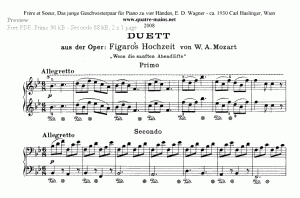M3: Music, Memory, and Mozart

M3: Music, Memory, and Mozart
In continued celebration of Brain Awareness week (March 11 – 19, 2013), this week we look at the Mozart Effect.
Originated in 1993, and named after Wolfgang Amadeus Mozart, The Mozart Effect proposes that listening to classical music increases intelligence and memory.
Early experimentation by neurobiologist Xiaodan Leng and Gordon Shaw at the University of Calorfnia found that nerve cells fire patterns and rhythms in the cortex, which had characteristics similar to baroque, new age, or Eastern music (Leng and Shaw, 1990).
Researcher Frances H. Rauscher’s 1993 experiment also demonstrated the correlation between music and learning. His findings showed that 10 minutes of complex, non-repetitive music may stimulate neural pathways and temporarily boost intelligence.
Though researchers continue to try to learn and understand the exact mechanisms by with it works, many researchers agree that music could be used to develop firing patterns of brain nerve cells.
The right hemisphere of our brain processes expressivity and creativity, and the left brain processes logic, language and analytics. For example, spatial-temporal sequencing is processed in the brain’s right hemisphere. Spatial-temporal reasoning is an ability to mentally visualize and manipulate patterns in a time-ordered sequence (i.e. puzzles). Whereas, sequencing is processed by the left brain. Attribute blocks, for example, help develop logical skills.
Music therapy helps stimulate regular and consistent spatial brain activity, in both hemispheres. Because of its relation to creativity, music is often misunderstood to be processed in the right brain. However, music stimulates both right and left brain hemispheres. The right brain processes musical volume, timbre, intonation, and emotions (Gates, 1977). The left brain is associated to musical elements such as temporal order, duration, simultaneity, and rhythm (Gates, 1977).
Music therapy uses Mozart and other music to help organize the sensory system with rhythm. This helps process sound and motor development. The Mozart Effect is commonly used as a primer, or a warm-up. It helps build comfort and a sense of ease for the patient, which, in turn, creates a strong foundation for further development and learnings.
Sources:
Gates, Anne, John L. Bradshaw. (1977) “The Role of the Cerebral Hemispheres in Music,” Brain and Language 4: 403-431.
Leng, X., Shaw, G. L., & Wright, E. L. (1990). Coding of musical structure and the trion model of cortex. Music Perception, 8, 49-62.
Rauscher FH, Shaw GL, Ky KN. (1993) Music and Spatial Task Performance. Nature. 365:611.

